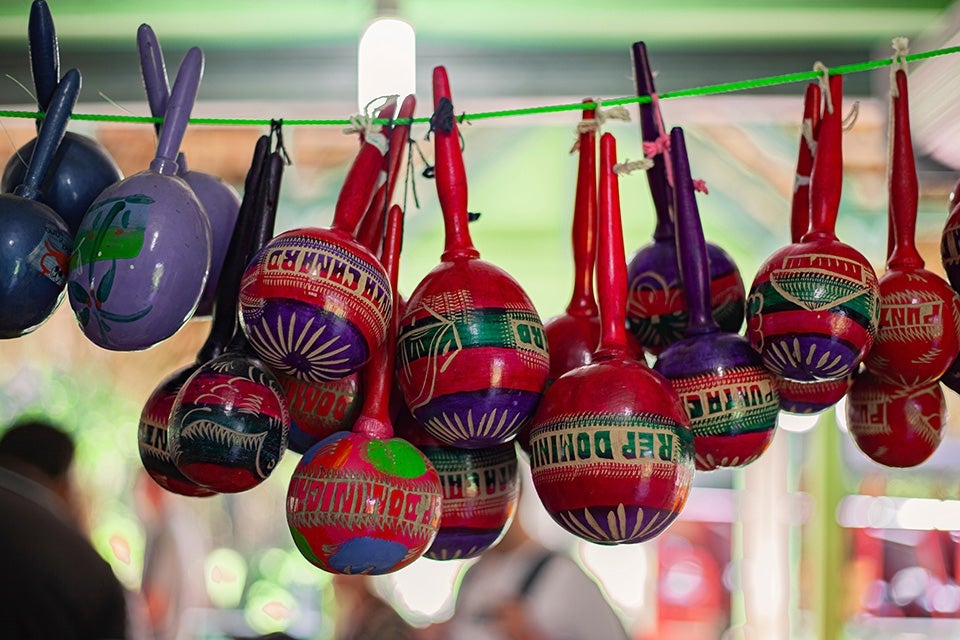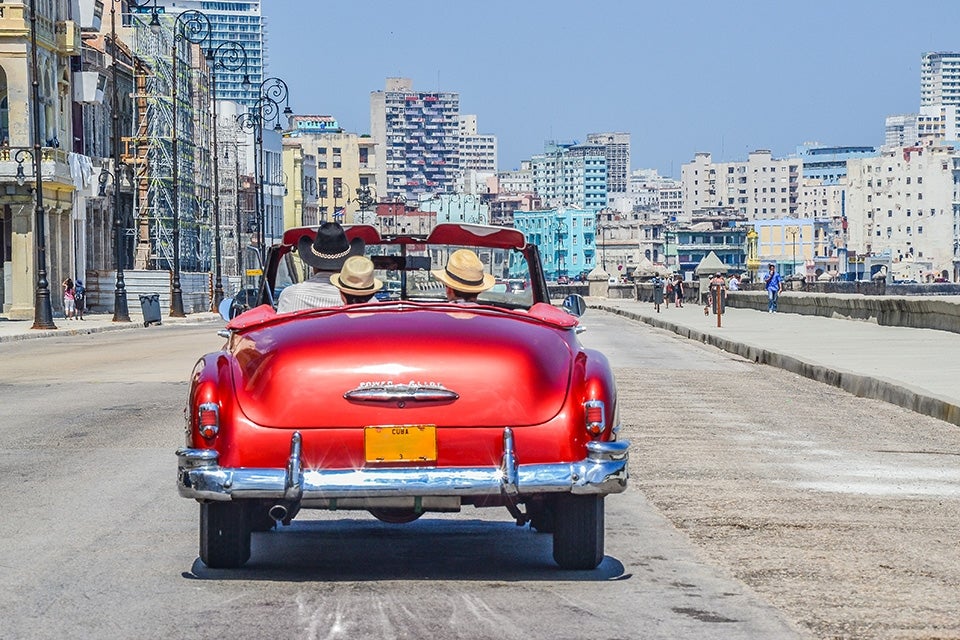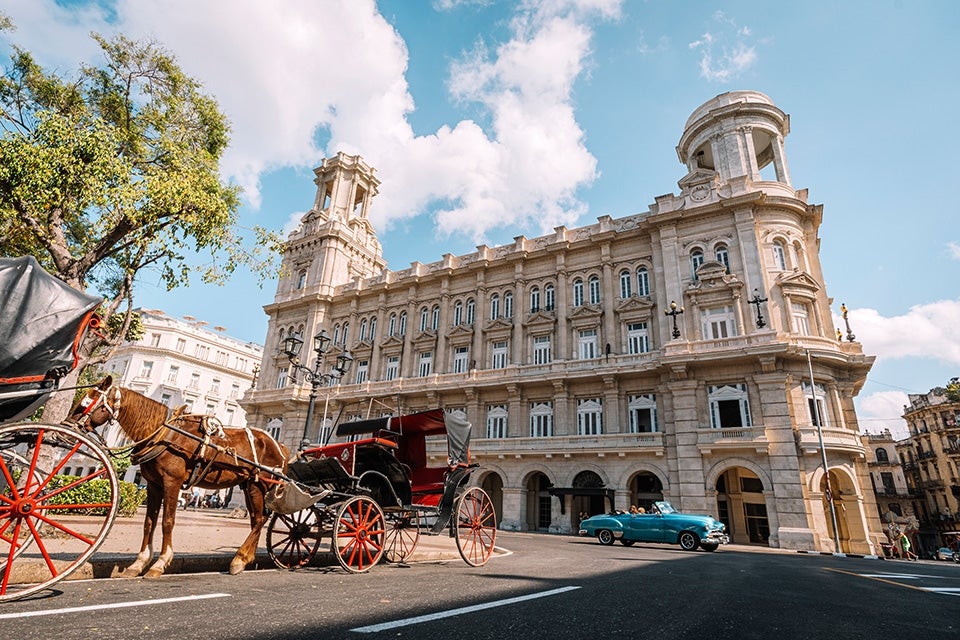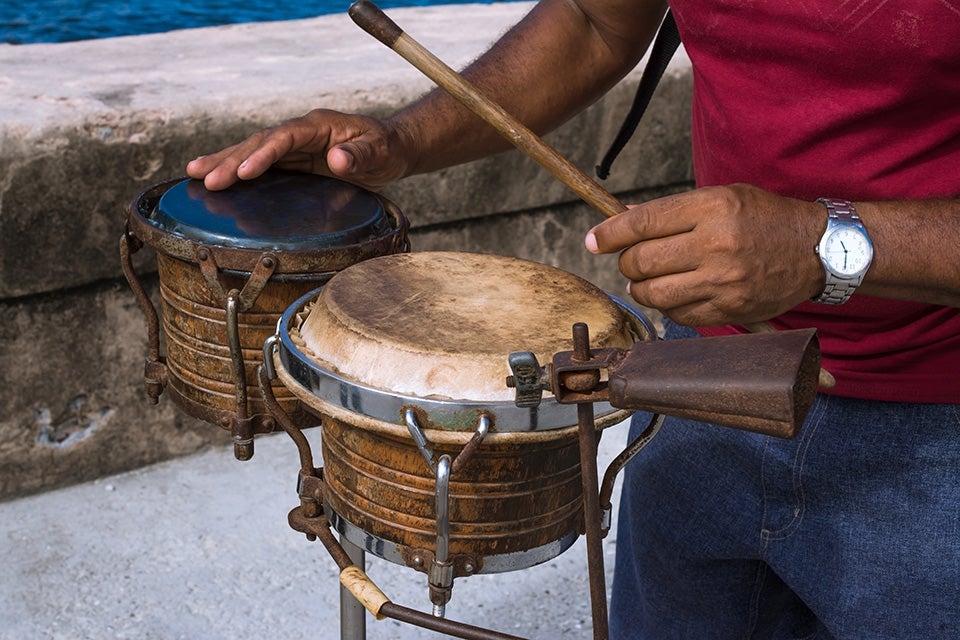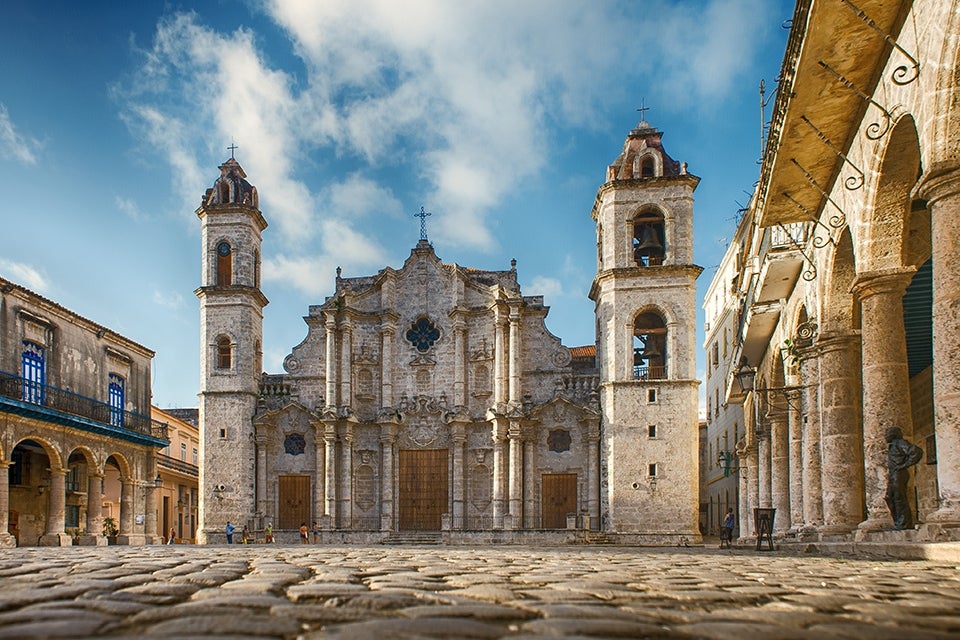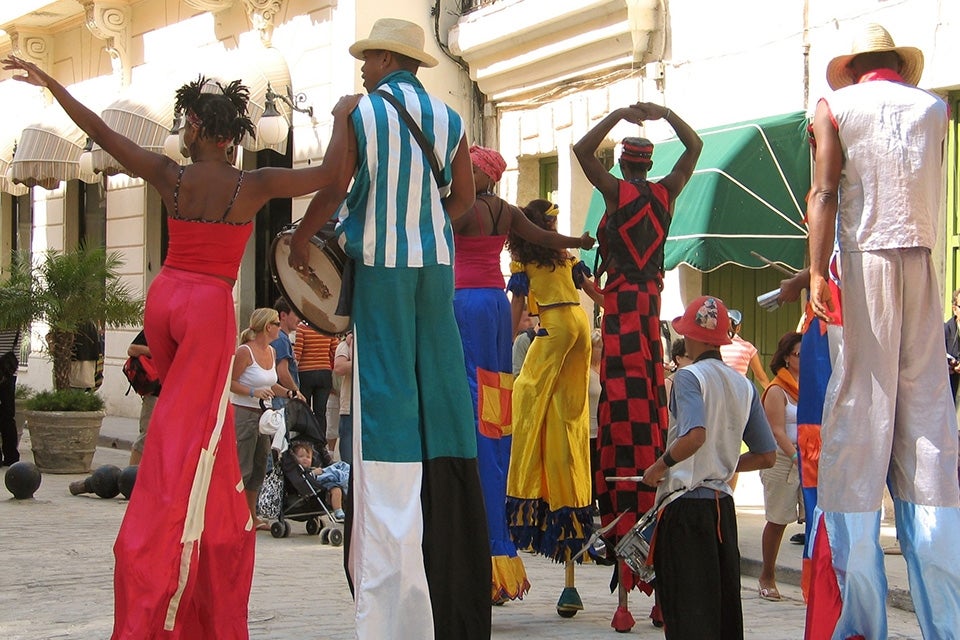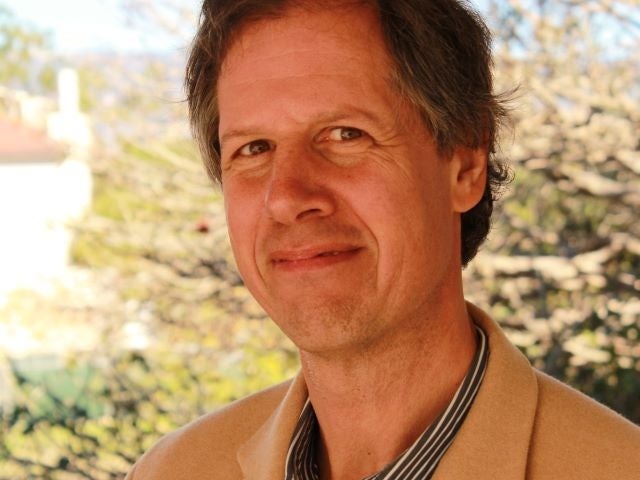This morning stop at Callejon de Hamel, the site of a huge multi-dimensional Afro-Cuban mural. Here there will be a chance to learn more about the Santeria religion where we meet with a Santeria practitioner, Elias Aseff. Probably the most explicit reference to the African soul in Cuba is to be found in Santeria, which represents the synthesis of the cults of African slaves and the Catholic religion, Accompanied by Elias, we will enter a Santeria home and learn more about this religion
From here drive to the home and studio of artist José Fuster for a private lunch. Fuster has turned his neighborhood into one enormous piece of mosaic art. His vast array of works evoking the nation’s African roots from ceramics to whimsical paintings drawn from ordinary life in Cuba: commuters crowded inside creaky, smoke-belching buses, the ubiquitous dominoes games in backyards and street corners,
After lunch enjoy an opportunity to learn about the Cuban musical tradition at an interactive musical workshop. Cuban Afro-Cuban music has its roots deep in the traditions, religion, and family knowledge dating back to the slave ships and before. There are many different kinds of salsa music and dance in Cuba but most of these styles are derived from “Son” which will be the focus this morning. Son developed in eastern rural areas of Cuba around the turn of the 20th century, but traces of it date back to the 1700s. Son is a distinctly Afro-Cuban musical style because it uses an African rhythm, Spanish poetic styles in the lyrics, and the use of plucked instruments.
Right after enjoy a private Salsa class. Salsa has its origins in Cuba where the blending of African drum rhythms and Spanish guitar evolved into a variety of Latin American music. Today's Salsa dancing is a rich blend of Latin-American and Western influences.
Return to the hotel stopping at the John Lennon Park where, there is a sculpture of the former Beatles member John Lennon, sculpted by Cuban artist José Villa Soberón. On a marble tile at the foot of the bench there is an inscription written, in Spanish, "You may say I'm a dreamer, but I'm not the only one." The statue was unveiled by Fidel Castro on December 8, 2000, the 20th anniversary of Lennon's murder who, at one time, banned the music of the Beatles in Havana. The sculpture of Lennon is currently not wearing his signature round-lens glasses, which have been stolen several times!
This evening enjoy a New Year’s Eve celebratory dinner.
Overnight: Marques de la Torre
Meals: B, L, D
